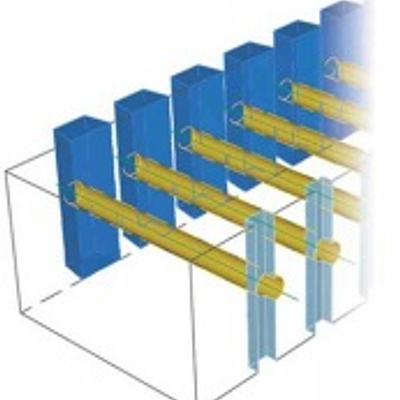Computer Aided Design
Efficiency of boundary evaluation for a cellular model

Feature modeling systems usually employ a boundary representation (b-rep) to store the shape information on a product. It has, however, been shown that a b-rep has a number of shortcomings, and that a cellular representation can be a valuable alternative. A cellular model stores additional shape information on features, including the feature faces that are not on the boundary of the product. Such information can be profitably used for several purposes. A major operation in every feature modeling system is boundary evaluation, which computes the geometric model of a product, i.e. either the b-rep or the cellular model, from the features that have been specified by the user. Since boundary evaluation has to be executed each time a feature is added, removed or modified, its efficiency is of paramount importance. In this paper, boundary evaluation for a cellular model is described in some detail. Its efficiency is compared to the efficiency of boundary evaluation for a b-rep, on the basis of both complexity analysis and performance measurements for the two types of evaluation. It turns out that boundary evaluation for a cellular model is, in fact, more efficient than for a b-rep, which makes cellular models even more attractive as an alternative to b-reps.
More Information
Gallery
Citation
BibTex
@article{bib:bidarra:2005,
author = { Bidarra, Rafael and Madeira, Joaquim and Neels, W.J. and Bronsvoort, Willem F. },
title = { Efficiency of boundary evaluation for a cellular model },
journal = { Computer Aided Design },
volume = { 37 },
year = { 2005 },
pages = { 1266--1284 },
doi = { 10.1016/j.cad.2004.12.006 },
dblp = { journals/cad/BidarraMNB05 },
url = { https://publications.graphics.tudelft.nl/papers/635 },
}
